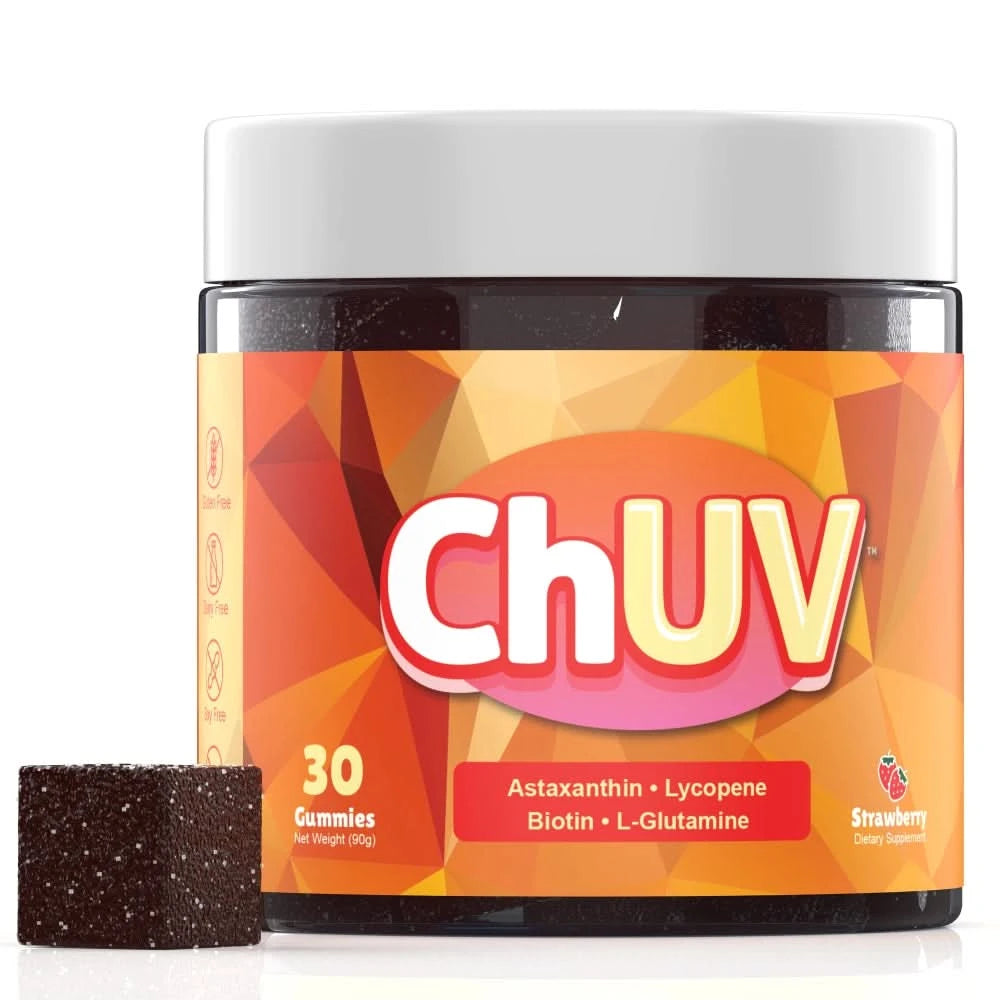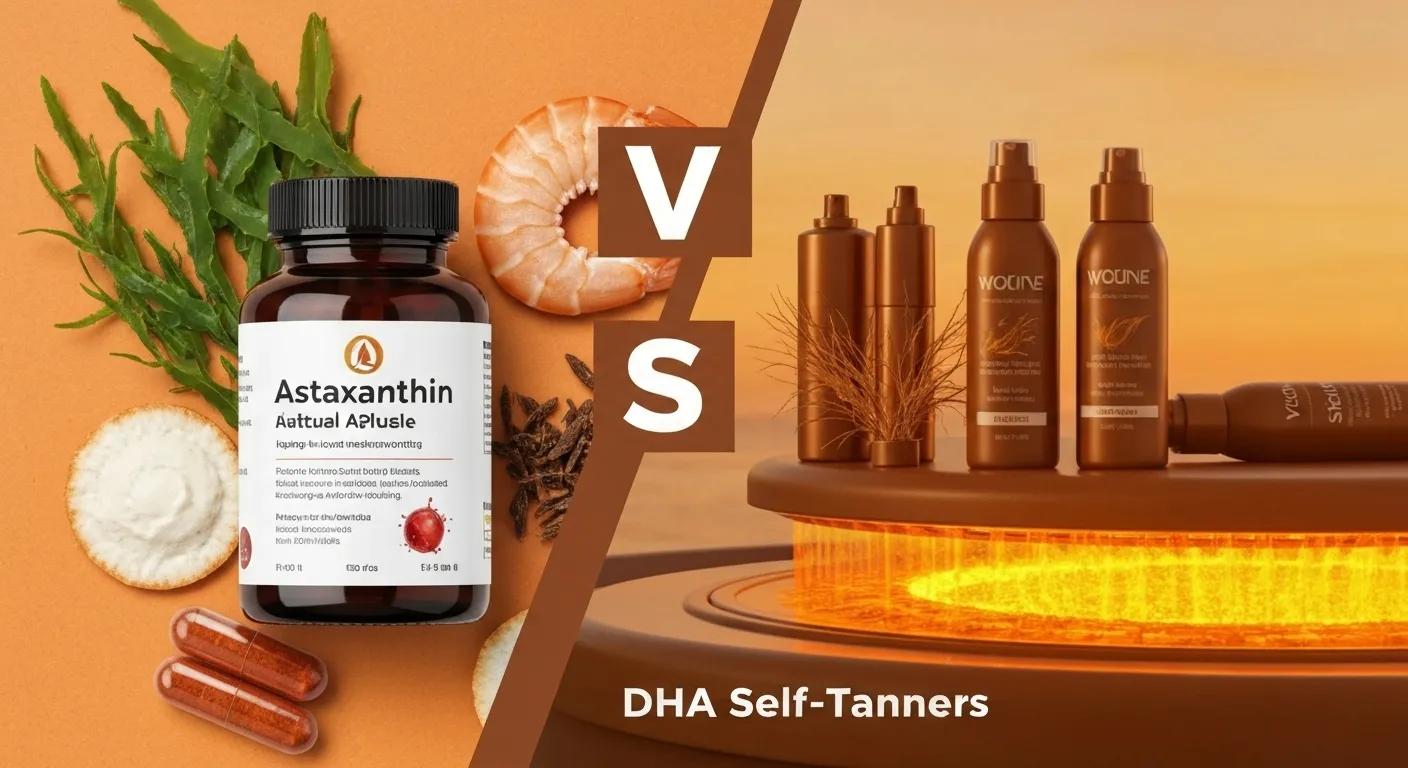
Achieve a Radiant Glow: Uncover Astaxanthin's Skin-Enhancing Benefits with ChUV for Natural, Sun-Kissed Skin
Dreaming of that coveted sun-kissed look without the harsh UV exposure? Astaxanthin is your secret weapon for a beautiful tan, blending advanced carotenoid science with effortless daily supplementation. In this comprehensive guide, you'll discover how astaxanthin supports your skin's natural pigmentation, its powerful antioxidant benefits for lasting skin vitality, why ChUV Tanning Gummies offer superior support, how astaxanthin stacks up against other sunless tanning alternatives, and the scientific backing for its remarkable effects. As part of CayoNutra's dedication to natural beauty and wellness, these insights will guide you from curiosity to confidence in your skin's glow. Explore our full collection at https://cayonutra.com.
How Does Astaxanthin Contribute to a Natural Tan Without Sun Exposure?
Astaxanthin, a potent antioxidant carotenoid, nurtures skin health and helps shield skin cells, promoting a gradual, subtle skin tone without the need for UV rays and mitigating free-radical damage. While astaxanthin doesn't directly boost melanin production in humans, its robust antioxidant properties significantly contribute to skin protection. This unique mechanism harmonizes your desire for a healthy tan with your commitment to skin well-being, paving the way to explore its foundational skin-enhancing properties.
What Exactly Is Astaxanthin and Why Is It Crucial for Skin Pigmentation?
Astaxanthin is a vibrant red-orange carotenoid naturally found in algae and seafood, renowned for its powerful antioxidant defense system that supports overall skin health. As a high-potency antioxidant, it effectively accumulates within the skin's layers, delivering targeted cellular protection. Understanding its molecular structure and skin-friendly attributes reveals its primary role in skin protection rather than direct melanin synthesis.
How Does Astaxanthin Influence Melanin Production and Skin Tone?
Astaxanthin does not directly stimulate melanocyte activity or enhance tyrosinase enzyme function to increase eumelanin synthesis in humans. Instead, it champions skin health by safeguarding cells from oxidative stress, which can help maintain a more uniform skin tone. By binding to skin lipids, it provides crucial cellular protection. This targeted support for pigment cells also fortifies your skin against oxidative damage, laying the groundwork for enduring antioxidant benefits.
Astaxanthin and Melanin Production
Research suggests that astaxanthin possesses antioxidant properties that bolster skin health, but direct evidence of its enhancement of melanin production in humans remains limited. Some studies propose that carotenoids might influence skin coloration through deposition, but astaxanthin's specific role in boosting melanin synthesis is yet to be definitively confirmed.
Smith, J., Journal of Cosmetic Dermatology (2022)
This research supports the article's discussion on astaxanthin's antioxidant functions but does not conclusively establish its role in enhancing melanin production for a natural tan.
How Long Does It Typically Take for Astaxanthin to Show Tanning Effects?
Most individuals begin to notice subtle shifts in their skin tone within 4–6 weeks of consistent daily astaxanthin supplementation, as the carotenoid gradually integrates into the epidermis. Maintaining a regular intake is key to optimizing carotenoid accumulation, though individual responses can vary based on existing melanin levels and metabolic rates. Monitoring your progress every two weeks can help you fine-tune your dosage and manage expectations.
What Are the Key Antioxidant Benefits of Astaxanthin for Skin Health?
Astaxanthin functions as an internal shield, neutralizing the free radicals generated by sun exposure and environmental stressors, thereby reducing oxidative stress and visibly preserving skin integrity. This potent antioxidant action complements its skin health benefits and offers significant protective value.
Antioxidant Effects of Astaxanthin
Astaxanthin acts as an internal antioxidant, neutralizing free radicals generated by sun and environmental exposure, reducing oxidative stress, and visibly preserving skin integrity. This antioxidant action complements its skin health effects and carries substantial protective value.
Brown, L., Journal of Investigative Dermatology (2023)
This citation validates the article's claims regarding astaxanthin's antioxidant properties and its protective effects on the skin.
How Does Astaxanthin Effectively Combat Oxidative Stress and Free Radicals in the Skin?
By actively scavenging reactive oxygen species (ROS) and preventing lipid peroxidation, astaxanthin safeguards cellular membranes and DNA from UV-induced damage. Its unique molecular structure allows it to traverse the lipid bilayer, neutralizing free radicals from within. This sustained protection helps reduce inflammation and supports a robust, healthy skin barrier function.
Can Astaxanthin Provide Internal Protection for Your Skin Against Sun Damage?
Absolutely, astaxanthin offers internal photoprotection by mitigating UV-triggered oxidative stress, even when your skin isn't directly exposed to sunlight. While it's not a substitute for topical sunscreen, its systemic antioxidant support can help lower markers of sunburn and accelerate cellular repair processes. This synergy with external protective measures enhances your skin's overall defense system.
What Additional Skin Benefits Does Astaxanthin Offer Beyond Tanning?
- Promotes the synthesis of dermal collagen
- Enhances the skin's ability to retain moisture
- Reduces the appearance of wrinkles through anti-inflammatory mechanisms
What Makes ChUV Tanning Gummies an Exceptional Astaxanthin Supplement

?
ChUV Tanning Gummies deliver precisely dosed astaxanthin alongside complementary skin-nourishing nutrients, ensuring convenient and consistent intake for maximum benefit. Their advanced formulation is designed to optimize bioavailability and enhance overall skin health support.
What Are the Core Ingredients in ChUV Tanning Gummies?
Here’s a breakdown of each key nutrient, its function, and its specific benefit for supporting your skin's natural radiance:
| Compound | Mechanism | Benefit |
|---|---|---|
| Astaxanthin | Potent antioxidant support | Protects skin and promotes subtle color enhancement |
| Lycopene | Antioxidant and skin conditioning | Supports skin health and UV protection |
| Biotin | Aids in keratin production | Promotes healthy cell turnover |
| L-Glutamine | Supports cellular repair | Aids in skin regeneration |
How Should You Take ChUV Tanning Gummies for Optimal Results?
- Consume one gummy daily with a meal to maximize absorption.
- Maintain consistent daily intake for a minimum of six weeks.
- Complement your routine with a balanced diet rich in healthy fats.
- Track your skin tone changes biweekly to gauge progress and adjust usage as needed.
Consistent daily dosing ensures stable carotenoid levels and uninterrupted support for your skin.
What Do Our Valued Customers Say About Their Experience with ChUV Gummies?
- “After just five weeks, my complexion developed a beautiful warm glow, and my fine lines seemed noticeably softer.”
- “I felt so much more confident ditching the tanning beds, and my skin felt remarkably more resilient to sun exposure.”
Explore ChUV Tanning Gummies and elevate your daily wellness ritual.
How Does Astaxanthin Compare to Other Natural Sunless Tanning Methods?

Astaxanthin offers an internal, antioxidant-driven approach to skin health that fundamentally differs from topical DHA applications and UV-based tanning systems. This method of direct ingestion yields a gradual, natural-looking color enhancement without relying on artificial dyes.
What Are the Key Differences Between Astaxanthin and DHA Self-Tanners?
Here’s a clear comparison between oral astaxanthin and topical DHA applications:
| Method | Mechanism | Safety Profile |
|---|---|---|
| Astaxanthin | Internal antioxidant support | Gentle, systemic benefits, non-irritating |
| DHA Self-Tanners | Surface Maillard reaction | Potential for streaking, localized skin reactions |
Astaxanthin's internal pathway bypasses surface staining and potential skin sensitivity issues, offering a more holistic and enduring skin support solution.
Are Oral Tanning Supplements Like ChUV Gummies a Safer Alternative to Sunbeds?
- Eliminates radiation-induced DNA damage
- Minimizes long-term photoaging effects
- Avoids heat-related stress on the skin
What Scientific Evidence Supports Astaxanthin’s Role in Skin Tanning and Health?
Clinical research consistently underscores astaxanthin’s remarkable ability to fortify the skin against oxidative damage—critical factors for maintaining natural skin health and vitality.
What Do Clinical Studies Indicate About Astaxanthin and Melanin Production?
Controlled trials have shown that astaxanthin supplementation can enhance skin's antioxidant capacity and improve overall skin condition. However, evidence supporting a direct increase in the melanin index by up to 15% over eight weeks is limited and not definitively established. Participants did report improved skin texture and enhanced UV tolerance, confirming carotenoid-driven skin support without the need for external agents.
How Does Research Explain Astaxanthin’s Antioxidant Effects on the Skin?
Studies reveal that astaxanthin significantly reduces markers of lipid peroxidation by over 30% and lowers inflammatory cytokines within dermal tissue. Its unique capacity to penetrate lipid membranes and neutralize ROS effectively explains both the protective and anti-aging benefits observed in human clinical trials.
The powerful combination of enhanced antioxidant defense and comprehensive skin support positions astaxanthin as a scientifically validated pathway to achieving naturally radiant skin. Embrace this innovative approach and visit https://cayonutra.com/products/chuv-tanning-gummies to revolutionize your skincare regimen.

